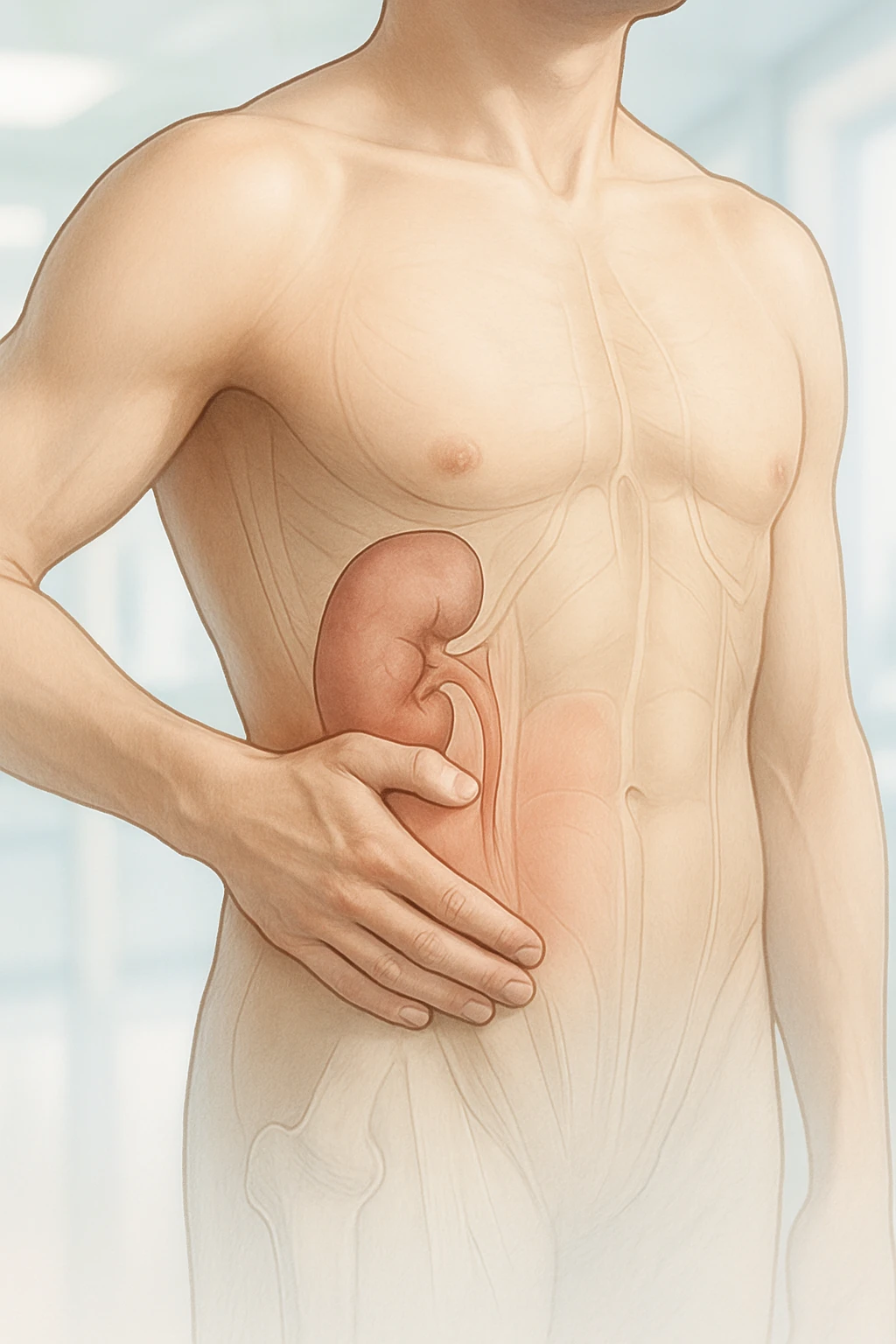Shoulder Pain Relief Through Accurate Diagnosis and Care
Global Burden and Epidemiology of Shoulder Pain
Shoulder pain is one of the most common musculoskeletal conditions, affecting individuals across all ages and activity levels. It is a leading cause of functional limitation and healthcare utilization worldwide. Because the shoulder is highly mobile yet inherently unstable, even minor injury or inflammation can significantly impact daily activities such as lifting, reaching, or dressing. Understanding its global prevalence and demographic patterns provides essential context for clinical management and prevention strategies.
Prevalence and Demographics
Population-based studies estimate a median community prevalence of shoulder pain at approximately 16%, though reported rates vary due to differing definitions and assessment methods. The median incidence is around 37.8 cases per 1,000 persons annually, showing that new episodes are common. In clinical practice, shoulder pain accounts for a substantial proportion of musculoskeletal consultations-about 1% of adults over 45 present each year in primary care with a new episode. These findings highlight shoulder pain as a widespread public health concern across populations and occupations.
- Median community prevalence: ~16%
- Median incidence: ~37.8 per 1,000 persons per year
- Adults over 45 presenting annually in primary care: ~1%
Shoulder pain occurs more often in women than men, possibly due to differences in musculoskeletal loading, hormonal factors, or healthcare-seeking behavior. Higher prevalence is reported in high-income regions, where sedentary work, repetitive strain, and aging populations contribute to increased risk. Regardless of geography, shoulder pain remains a globally relevant issue for clinicians and patients alike.
Public Health Impact
Beyond its frequency, shoulder pain significantly affects quality of life and productivity. Chronic pain can cause sleep disturbance, reduced work capacity, and psychological strain. From a healthcare perspective, it generates substantial costs through repeated consultations, imaging, physiotherapy, and occasional surgery. Given its high prevalence and potential for recurrence, shoulder pain represents both a clinical and public health challenge requiring ongoing research, prevention, and evidence-based care.

Anatomical Causes and Mechanisms of Shoulder Pain
The shoulder is the most mobile joint in the body, enabling a wide range of motion but at the cost of stability. Its complex anatomy-comprising the glenohumeral joint, rotator cuff muscles, tendons, bursae, and ligaments-means that many structures can contribute to shoulder pain when injured or inflamed. Recognizing these anatomical sources helps clinicians differentiate between soft-tissue and joint-related disorders and tailor treatment appropriately.
Rotator Cuff Pathology
Rotator cuff disorders are the most common cause of shoulder pain, accounting for more than two-thirds of cases in both primary care and community settings. The rotator cuff includes four muscles that stabilize the humeral head within the glenoid cavity during movement:
- Supraspinatus
- Infraspinatus
- Teres minor
- Subscapularis
Repetitive stress, aging, or trauma can lead to tendinopathy or tendon tears, producing pain during lifting or overhead activity, often with weakness or restricted motion. Inflammation within tendons or the subacromial space can further exacerbate discomfort. Tendinopathy develops gradually through microtrauma, while tears may result from acute injury or progressive degeneration. Understanding these mechanisms supports early intervention and improved recovery.
Other Common Disorders
Several other conditions within the shoulder complex can cause pain:
- Subacromial bursitis: Inflammation of the bursa that cushions rotator cuff tendons beneath the acromion.
- Adhesive capsulitis (frozen shoulder): Contracture and thickening of the joint capsule, leading to progressive stiffness and pain.
- Glenohumeral osteoarthritis: Degenerative cartilage changes causing pain and stiffness, often in older adults or after injury.
- Instability syndromes: Recurrent pain from joint laxity or prior dislocation, associated with excessive motion or apprehension.
Together, these conditions highlight the multifactorial nature of shoulder pain, combining inflammation, degeneration, and mechanical imbalance. Accurate anatomical assessment guides effective rehabilitation and management.

Diagnosis and Clinical Evaluation of Shoulder Pain
Accurate diagnosis of shoulder pain involves a structured evaluation that integrates patient history, red-flag screening, physical examination, and appropriate imaging. Because shoulder pain can arise from multiple musculoskeletal or referred sources, clinicians rely on a synthesis of findings rather than any single test.
History and Red Flags
Assessment begins with a detailed history of onset, duration, and aggravating or relieving factors. Key questions explore recent trauma, repetitive strain, or systemic symptoms such as fever or weight loss. Red flags that may indicate serious conditions include:
- Severe pain following injury
- Visible deformity or swelling
- Inability to move the arm
- Signs of infection (warmth, redness, or fever)
- Pain radiating beyond the shoulder, suggesting referred cardiac or cervical pathology
Identifying these warning signs helps determine when urgent investigation or referral is needed.
Physical Examination
Examination includes inspection, palpation, range-of-motion assessment, and targeted maneuvers. Over 180 physical shoulder tests exist, though individual test accuracy is limited. Clinicians therefore interpret patterns of findings-pain distribution, weakness, and restriction-to improve diagnostic accuracy and distinguish between rotator cuff, instability, and adhesive capsulitis presentations.
| Test Type | Clinical Purpose |
|---|---|
| Range of Motion | Evaluates stiffness and movement limitation |
| Strength Testing | Assesses rotator cuff integrity and muscle weakness |
| Special Tests | Identifies specific conditions such as impingement or instability |
Combining these results with a detailed clinical history provides a more accurate understanding of underlying pathology and informs management decisions.
Role of Imaging
Imaging supports but does not replace clinical assessment. Guidelines vary on the use of ultrasound, MRI, and radiography. Ultrasound is often preferred for soft-tissue evaluation, while MRI provides detailed visualization when diagnosis remains uncertain or surgery is being considered. Radiographs are useful for trauma, suspected arthritis, or structural deformities.
Findings should always be interpreted alongside symptoms, as imaging may show abnormalities in asymptomatic individuals. A balanced diagnostic approach ensures appropriate use of imaging and avoids unnecessary interventions.

When to Seek Medical Evaluation
- Sudden severe pain or visible deformity
- Inability to raise or move the arm
- Swelling, redness, or warmth around the joint
- Persistent pain despite rest
- Pain with fever or unexplained weight loss
These symptoms warrant prompt medical assessment to exclude fracture, infection, or referred cardiac causes.
Evidence-Based Management of Shoulder Pain
Managing shoulder pain follows an evidence-based, stepwise approach-beginning with conservative care and progressing to interventional or surgical options when necessary. The chosen strategy depends on the underlying cause, symptom duration, and response to therapy. While many patients improve with noninvasive measures, persistent cases may require escalation. Clinical guidelines highlight individualized care due to variable evidence quality across treatments.
Conservative Management
First-line management focuses on restoring motion, reducing inflammation, and correcting biomechanics. Typical strategies include:
- Activity modification to limit repetitive or overhead strain
- Short-term use of nonsteroidal anti-inflammatory drugs (NSAIDs) for pain and inflammation
- Structured physiotherapy incorporating stretching, strengthening, and posture correction
Physiotherapy can improve pain and function in mixed shoulder disorders compared with placebo, though results depend on diagnosis and adherence. Regular reassessment ensures treatment remains goal-oriented. Patient education on ergonomics supports long-term recovery and prevents recurrence.
Interventional Therapies
If conservative care is insufficient, interventional options may be used:
- Corticosteroid injections: Provide short-term relief for inflammation in bursitis, tendinopathy, or adhesive capsulitis.
- Hydrodilatation: Expands the joint capsule to restore motion in adhesive capsulitis.
- Ultrasound-guided aspiration: Removes calcific deposits or fluid in bursitis when indicated.
Guidelines vary on timing and repetition of corticosteroid injections. Interventions should complement, not replace, ongoing rehabilitation.
Surgical Approaches
Surgery is reserved for cases unresponsive to conservative or interventional management. Indications include structural damage, persistent disability, or treatment failure over several months. Common procedures are:
- Rotator cuff repair
- Subacromial decompression for impingement
- Stabilization for recurrent dislocation
- Shoulder arthroplasty for severe degenerative disease
Surgical decisions rely on clinical evaluation and patient goals, not imaging alone. Postoperative rehabilitation is vital to maintain outcomes and minimize recurrence. Shared decision-making ensures evidence-based and patient-centered care.

Recovery, Prognosis, and Prevention of Shoulder Pain
Recovery from shoulder pain depends on several factors, including the underlying cause, symptom duration, and adherence to rehabilitation. Long-term outcomes vary, but most patients experience meaningful improvement when evidence-based management and early physiotherapy are applied. Preventive strategies and patient education are equally essential to maintain function and reduce recurrence, both in general populations and among individuals with occupational or athletic risk factors.
Recovery and Prognostic Factors
Recovery patterns differ based on the type and severity of the shoulder disorder. Acute cases related to overuse or mild soft-tissue injury often respond well to conservative treatment, while chronic or degenerative conditions may require prolonged rehabilitation. Physiotherapy remains a cornerstone of management, shown in studies to improve pain and function compared with placebo interventions, although outcomes vary depending on program design and patient adherence.
- Early diagnosis and prompt initiation of therapy support faster recovery.
- Consistent adherence to prescribed exercises enhances long-term outcomes.
- Psychosocial support and patient motivation improve overall functional recovery.
Persistent pain or stiffness may indicate incomplete rehabilitation, unaddressed biomechanical issues, or delayed treatment. Clinicians emphasize gradual, goal-oriented rehabilitation that restores range of motion and strength without worsening symptoms.
Preventive Strategies
Effective prevention of shoulder pain focuses on minimizing mechanical stress and maintaining healthy shoulder mechanics. Ergonomic modifications in the workplace-such as adjusting desk height, monitor position, and scheduling movement breaks-help reduce repetitive strain. In sports, balanced training that incorporates flexibility and rotator cuff strengthening promotes joint stability and reduces the risk of reinjury. Postural awareness, particularly avoiding prolonged forward shoulder positioning, can also prevent chronic strain.
- Implement ergonomic workstation setups for repetitive or overhead tasks.
- Include regular mobility and strengthening exercises for the shoulder complex.
- Ensure proper warm-up and movement technique during athletic activities.
For individuals recovering from previous episodes of shoulder pain, progressive reconditioning and movement technique correction in overhead activities help prevent recurrence. Preventive measures are most effective when personalized to specific occupational and movement demands.
Patient and Clinician Education
Education plays a crucial role in improving outcomes and preventing chronicity. For patients, understanding the nature of shoulder pain-its common causes, expected recovery course, and the importance of active participation in therapy-encourages adherence and realistic expectations. Clinicians are advised to follow evidence-based practices, avoiding unnecessary imaging or invasive interventions when conservative care is effective.
Shared decision-making between patients and healthcare providers fosters trust and engagement, ensuring that treatment plans align with individual goals. Ongoing follow-up and reinforcement of preventive habits help sustain long-term shoulder health and function across diverse populations.

Frequently Asked Questions About Shoulder Pain
- Why is shoulder pain such a common problem?
- The shoulder’s wide range of motion makes it prone to strain, inflammation, and injury. Everyday activities or repetitive overhead movements often contribute to symptoms.
- How can I tell if my shoulder pain is serious?
- Warning signs include sudden severe pain, visible deformity, inability to lift the arm, or pain with fever. These may indicate fracture, infection, or referred pain and require prompt evaluation.
- What are the most frequent causes of shoulder pain?
- Common causes include rotator cuff tendinopathy or tears, bursitis, frozen shoulder, osteoarthritis, and instability after injury or overuse.
- Does posture affect shoulder pain?
- Yes. Poor posture, especially rounded shoulders or forward head position, increases strain on muscles and tendons, leading to chronic discomfort or stiffness.
- When is imaging needed for shoulder pain?
- Imaging such as ultrasound or MRI is typically used when symptoms persist despite initial treatment or when structural injury is suspected. It complements, not replaces, clinical assessment.
- How long does recovery from shoulder pain usually take?
- Recovery depends on the underlying cause and adherence to rehabilitation. Mild cases may improve within weeks, while chronic conditions can take several months of consistent therapy.
- What treatments are most effective for shoulder pain?
- Most people improve with conservative care-activity modification, anti-inflammatory medication, and physiotherapy. Injections or surgery are reserved for cases unresponsive to these measures.
- Can exercises help relieve shoulder pain?
- Targeted stretching and strengthening exercises, especially for the rotator cuff and shoulder stabilizers, can improve mobility and reduce pain when performed under professional guidance.
- Is shoulder pain more common in certain groups?
- Women and older adults experience shoulder pain more often, partly due to hormonal influences, degenerative changes, and differences in physical activity patterns.
- What can be done to prevent shoulder pain from returning?
- Maintaining good posture, incorporating regular shoulder mobility work, and using proper lifting or sports techniques reduce recurrence and support long-term joint health.













